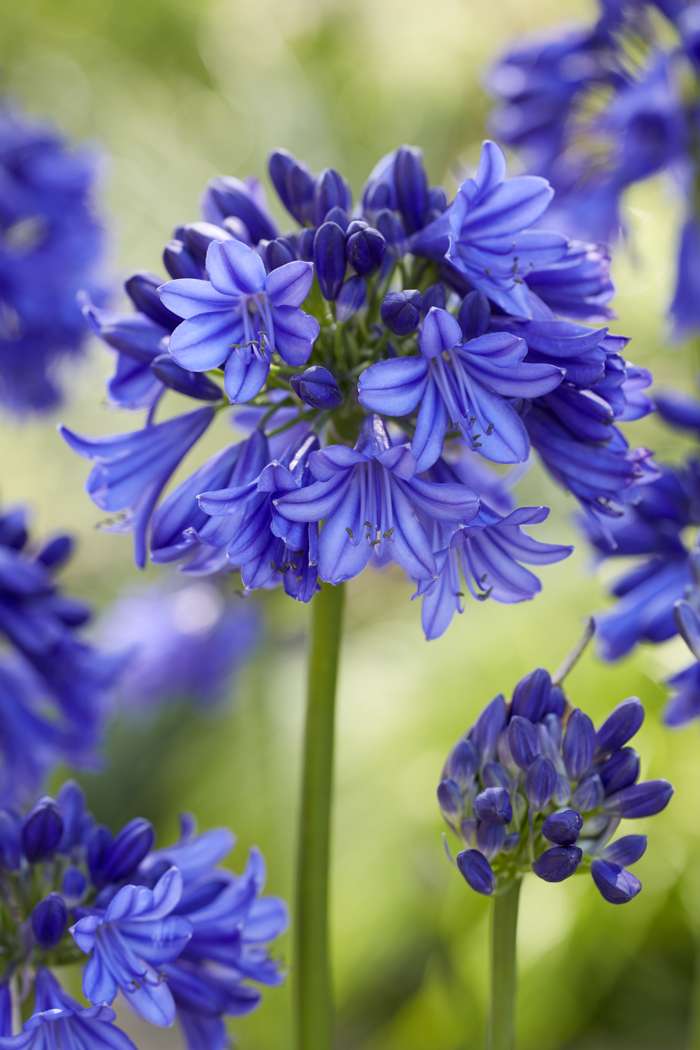Expanding Agapanthus: A Total Overview to Beautiful Blooms
Expanding Agapanthus: A Total Overview to Beautiful Blooms
Blog Article
Grasping the Art of Agapanthus Care: Crucial Steps for Healthy Growth and Vivid Blooms
In the world of cultivation, the farming of agapanthus stands as a rewarding endeavor for those who look for to nurture these elegant blooming plants. With their striking flowers and stylish foliage, agapanthus has captured the attention of garden enthusiasts worldwide. However, achieving optimal growth and vibrant blooms requires a nuanced technique that includes numerous vital actions. From picking the ideal range to grasping trimming methods, the journey towards growing flourishing agapanthus plants is complex and holds the essential to unlocking the complete potential of these organic gems.

Picking the Right Agapanthus Variety

When selecting the ideal Agapanthus variety for your yard, think about variables such as environment suitability, blossom color, and growth behavior. Agapanthus, frequently called Lily of the Nile or African lily, comes in a range of colors ranging from shades of blue and purple to white. Pick a bloom color that complements your existing garden combination to produce an unified landscape. In addition, think about the environment in your region to make certain the Agapanthus range you select can flourish in your details conditions. Some varieties are more forgiving of cold temperatures, while others prefer warmer climates. Recognizing the growth practice of different Agapanthus selections is essential for correct positioning within your garden. Some selections have a clumping growth routine, ideal for containers or boundaries, while others have an even more spreading nature, suitable for ground cover or mass growings. By meticulously reviewing these factors, you can choose the perfect Agapanthus variety to enhance the appeal of your garden.
Perfect Planting Conditions
Considering the ideal environmental demands is essential for successful Agapanthus cultivation. Agapanthus plants are delicate to chilly temperature levels and need to be safeguarded from frost during winter months.
To make certain healthy development and vibrant blossoms, plant Agapanthus light bulbs at a deepness of about 2-4 inches and area them 8-12 inches apart. Adding raw material, such as garden compost, to the dirt can improve water drainage and fertility, promoting durable origin advancement. Mulching around the base of the plants assists maintain moisture and suppresses weed development. Normal watering is crucial, particularly throughout the growing season, to maintain the soil regularly moist yet not waterlogged.
Watering and Fertilizing Tips
Keeping proper moisture degrees and giving necessary nutrients are crucial elements in the treatment routine for Agapanthus plants. When it involves sprinkling Agapanthus, it is critical to strike an equilibrium. If overwatered, these plants choose constantly damp dirt yet are at risk to root rot. Throughout the expanding season, water deeply once a week, making certain the soil is well-draining to protect against waterlogging. In hotter environments or during periods of drought, even more frequent watering may be essential to maintain the soil evenly wet. Nevertheless, decrease watering in the winter to avoid water logged conditions.
Fertilizing Agapanthus is necessary for advertising healthy development and respected blooms. Apply a well balanced fertilizer, such as a 10-10-10 formula, in the very early spring as new growth arises. By adhering to these watering and fertilizing suggestions, you can guarantee your Agapanthus plants grow and produce dynamic, durable blooms.
Trimming Techniques for Agapanthus
Pruning Agapanthus plants at the suitable times and with appropriate methods is critical for maintaining their health and promoting ideal growth and flowering. The optimal time to prune Agapanthus is in late wintertime or very early springtime prior to new development arises.
For flowered stems, wait till i loved this the blossoms have actually withered and afterwards cut them back to the base. This not just tidies up the plant's look yet additionally urges the growth of brand-new blossom buds. Deadheading invested blossoms can also reroute the plant's power into creating even more flowers instead of setting seeds. Nevertheless, if you want to gather seeds for propagation, leave some flowers to fully grown and completely dry on the plant.
Bear in mind to make use of tidy, sharp tools to make precise cuts and minimize the risk of presenting illness. Agapanthus. Routine pruning will certainly help maintain your Agapanthus looking cool and healthy and balanced while making certain a plentiful screen of lovely flowers
Handling Common Parasites and Diseases
After ensuring correct pruning methods for Agapanthus, it is vital to resolve common parasites and conditions that can affect the wellness Extra resources and vigor of these plants. One common bug that impacts Agapanthus is the Agapanthus gall midge.
Furthermore, Agapanthus plants can suffer from origin rot if they are planted in badly draining pipes dirt. By being attentive and taking punctual action against illness and bugs, you can help your Agapanthus plants prosper and generate vibrant blooms. Agapanthus.
:max_bytes(150000):strip_icc()/agapanthus-growing-guide-7368912_06ba-bf1fa268243b451387986fbd1e2433b3.jpg)
Conclusion
To conclude, mastering the art of agapanthus care involves picking the appropriate selection, supplying suitable growing problems, appropriate watering and fertilizing, appropriate trimming techniques, and addressing usual parasites and diseases. By complying with these important steps, you can make certain healthy and balanced growth and lively blooms for your agapanthus plants. Bear in mind to regularly check and preserve your plants to promote their general health and long life.
To make sure healthy development and dynamic blooms, plant Continue Agapanthus bulbs at a depth of concerning 2-4 inches and area them 8-12 inches apart. By following these watering and feeding suggestions, you can guarantee your Agapanthus plants grow and create vibrant, durable blossoms.
One typical insect that affects Agapanthus is the Agapanthus gall midge. Furthermore, Agapanthus plants can endure from origin rot if they are planted in poorly draining soil. By complying with these important actions, you can ensure healthy growth and vibrant flowers for your agapanthus plants.
Report this page